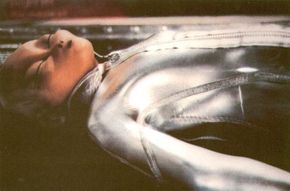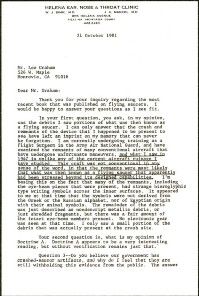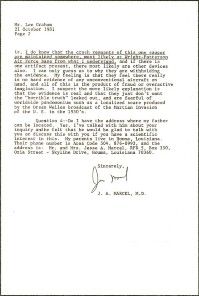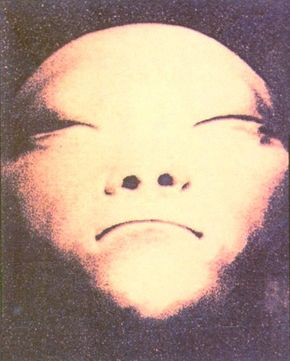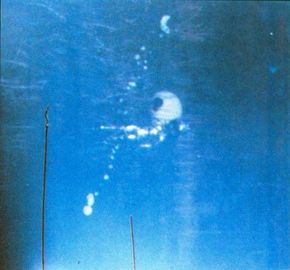On the evening of July 2, 1947, several witnesses in and near Roswell, New Mexico, observed a disc-shaped object moving swiftly in a northwesterly direction through the sky. The following morning Mac Brazel, foreman of a ranch located near tiny Corona, New Mexico, rode out on horseback to move sheep from one field to another. Accompanying him was a young neighbor boy, Timothy D. Proctor. As they rode, they came upon strange debris -- various-size chunks of metallic material -- running from one hilltop, down an arroyo, up another hill, and running down the other side. To all appearances some kind of aircraft had exploded.
In fact Brazel had heard something that sounded like an explosion the night before, but because it happened during a rainstorm (though it was different from thunder), he had not looked into the cause. Brazel picked up some of the pieces. He had never seen anything like them. They were extremely light and very tough.
Advertisement
By the time events had run their course, the world would be led to believe that Brazel had found the remains of a weather balloon. For three decades, only those directly involved in the incident would know this was a lie. And in the early 1950s, when an enterprising reporter sought to re-investigate the story, those who knew the truth were warned to tell him nothing.
The cover-up did not begin to unravel until the mid-1970s, when two individuals who had been in New Mexico in 1947 separately talked with investigator Stanton T. Friedman about what they had observed. One, an Albuquerque radio station employee, had witnessed the muzzling of a reporter and the shutting down of an in-progress teletyped news story about the incident. The other, an Army Air Force intelligence officer, had led the initial recovery operation. The officer, retired Maj. Jesse A. Marcel, stated flatly that the material was of unearthly origin.
The uncovering of the truth about the Roswell incident -- so called because it was from Roswell Field, the nearest Air Force base, that the recovery operation was directed -- would be an excruciatingly difficult process. It continues to this day, even after publication of three books and massive documentation gleaned from interviews with several hundred persons as well as other evidence. Besides being the most important case in UFO history -- the one with the potential not to settle the issue of UFOs but to identify them as extraterrestrial spacecraft -- the Roswell incident is also the most fully investigated. The principal investigators have been Friedman, William L. Moore (coauthor of the first of the books, The Roswell Incident [1980]), Kevin D. Randle, and Donald R. Schmitt. Randle and Schmitt, associated with the Chicago-based Center for UFO Studies (CUFOS), authored the most comprehensive account so far, UFO Crash at Roswell (1991). From this research, the outlines of a complex, bizarre episode have emerged.
Want to learn more about UFOs and aliens? Take a look at these articles:
Advertisement
